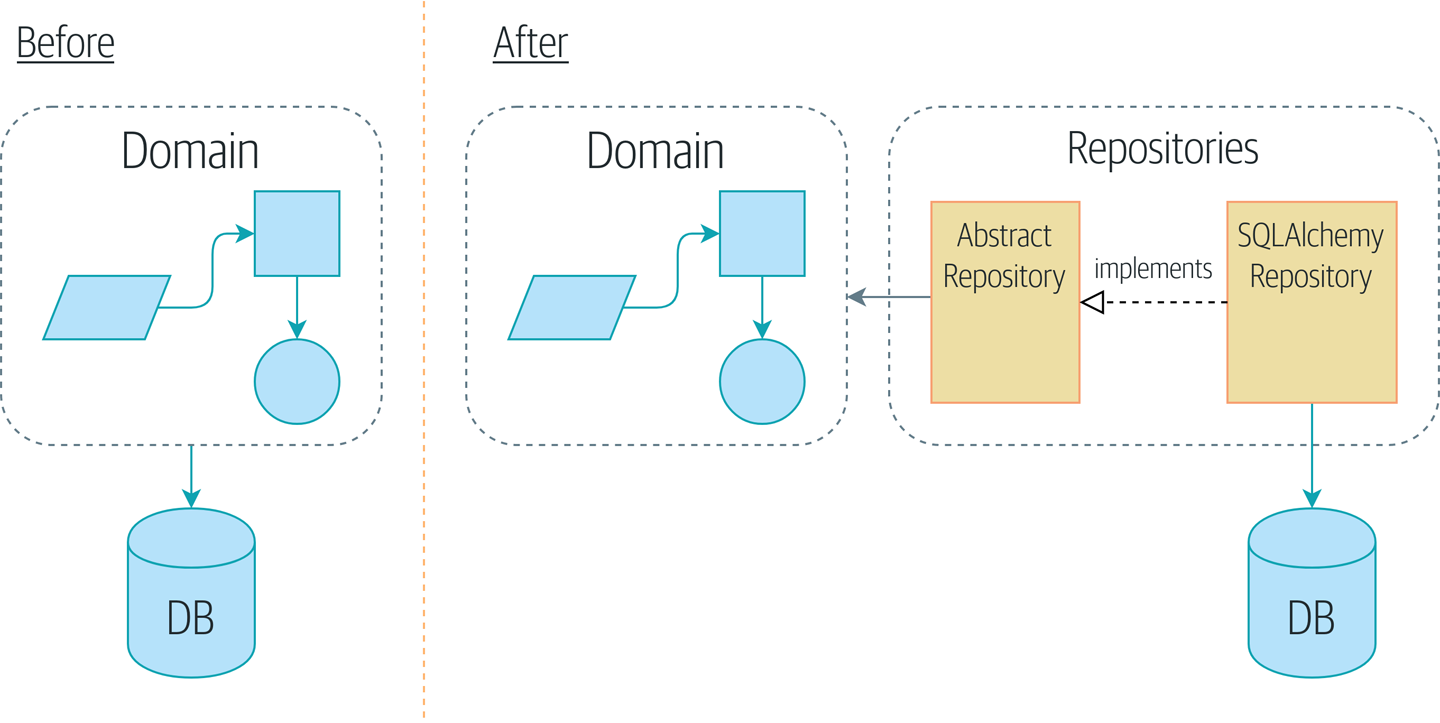Chapter 2. Repository Pattern
It’s time to make good on our promise to use the dependency inversion principle as a way of decoupling our core logic from infrastructural concerns.
We’ll introduce the Repository pattern, a simplifying abstraction over data storage, allowing us to decouple our model layer from the data layer. We’ll present a concrete example of how this simplifying abstraction makes our system more testable by hiding the complexities of the database.
Figure 2-1 shows a little preview of what we’re going to build:
a Repository object that sits between our domain model and the database.

Figure 2-1. Before and after the Repository pattern
Tip
The code for this chapter is in the chapter_02_repository branch on GitHub.
git clone https://github.com/cosmicpython/code.git cd code git checkout chapter_02_repository # or to code along, checkout the previous chapter: git checkout chapter_01_domain_model
Persisting Our Domain Model
In Chapter 1 we built a simple domain model that can allocate orders to batches of stock. It’s easy for us to write tests against this code because there aren’t any dependencies or infrastructure to set up. If we needed to run a database or an API and create test data, our tests would be harder to write and maintain.
Sadly, at some point we’ll need to put our perfect little model in the hands of users and contend with the real world of spreadsheets ...
Get Architecture Patterns with Python now with the O’Reilly learning platform.
O’Reilly members experience books, live events, courses curated by job role, and more from O’Reilly and nearly 200 top publishers.

